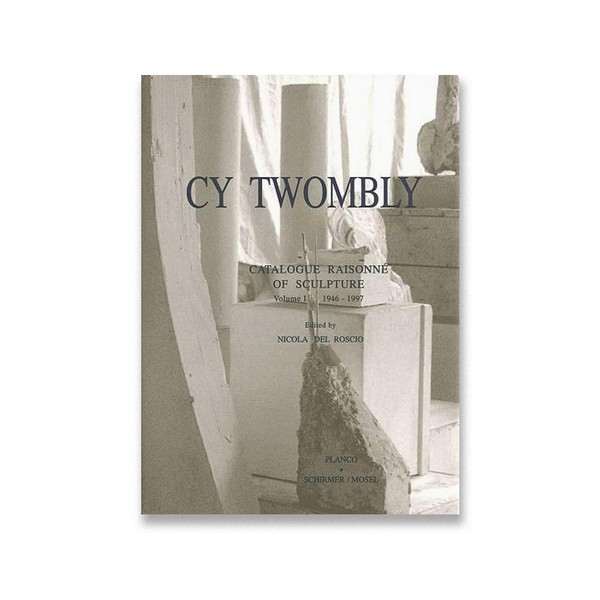Cy Twombly
Catalogue Raisonné of Sculpture
Volume II, 1998–2011

Cy Twombly Catalogue Raisonné of Sculpture Vol. II includes sculptures produced from 1998 until the artist’s passing in 2011. The introductory text by Nicola Del Roscio offers a vital account of the sculptures “based, not just on curatorial or statistical facts, but on what Cy said about his works and circumstances, memories and experiences that infused their meaning” (7). Del Roscio also explores the connections between Twombly’s sculptures and his works in other media (e.g., photography) and references embedded in the sculptures (e.g., the Gaeta skyline) that might otherwise be opaque to those without similar firsthand knowledge of Twombly’s practice. The connections Twombly drew between his sculptures and nature, as well as his working practices in producing them (“practical, immediate, and of a pitiful brutality” [13]) are addressed throughout.
This later set of sculptures includes rare instances of fully polychromatic sculptures without any white paint (e.g., Turkish Delight, 2000), many of which reflect a major thematic concern with Middle Eastern references present throughout the later sculptures. These are contextualized alongside the more austere white sculptures for which Twombly is best known. Though primarily of interest to researchers interested in the sculptures themselves, this volume also provides many vital connections to other aspects of Twombly’s practice. See e.g., the entry for Untitled (2001, cat. no. 43), which notes that “the colored paper tissues [used in the sculpture] are leftovers the artist used to dry the paint during the production of his series Lepanto” (100). Despite consistent returns to funerary themes, many of the sculptures are lighthearted and witty, embodying what Danto calls “a pervasive spirit of play” (15) in his introduction to Vol. I.
The catalogue includes exceptional sections of particular interest, including a selection of tombstones the artist designed for close friends—echoing the funerary themes present throughout many of the sculptures—and a selection of rejected and unfinished sculptures, both of which will be of interest to researchers focusing on the artist’s process. This catalogue will also be helpful for scholars researching Twombly’s time in Lexington, Virginia and Pfaffikon, Switzerland, where many of these sculptures were produced. Many sculptures in both Vols. I and II were produced in Twombly’s residences in Italy as well (note, however, that most in Vol. II were produced in Gaeta rather than Rome or Bassano in Teverina). Vol. II also includes biographical notes, lists of one person exhibitions, one person exhibition catalogues, group exhibitions, group exhibition catalogues, monographs, and general literature (until 2019). As with volume I, this is an indispensable reference for students and scholars working on the sculptures or on any of their thematic and material connections to the rest of Twombly’s practice. For further reading, see Kate Nesin’s Cy Twombly’s Things (2014), a foundational account of the sculptures and their materiality. The catalogues raisonnés and Nesin’s text together provide a vital orientation for scholars researching any component of Twombly’s sculptural practice. Achim Hochdörfer’s Cy Twombly: Das Skulpturale Werk (2001) also offers a detailed and productive account of the sculptures.
(Publication description by Jamie Danis)
Cy Twombly Catalogue Raisonné of Sculpture Vol. II. Edited and with an introduction by Nicola Del Roscio. Munich: Schirmer/Mosel, 2019. 352 pages; fully illustrated. English edition.
